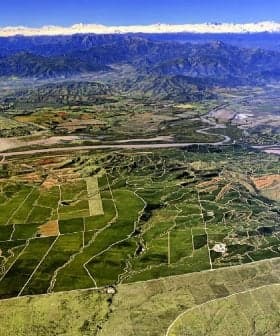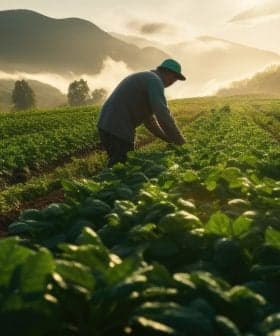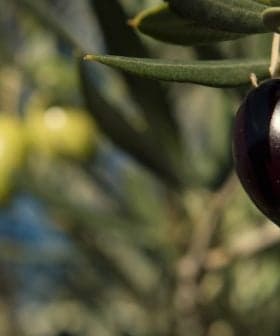Calif. Olive Farmers Should Blame Their Government for Inability to Compete with Spain, Not the E.U.
The Olive Growers Council of California is urging the U.S. government to maintain tariffs on Spanish table olive imports, disagreeing with the WTO’s ruling allowing subsidies for European farmers. The U.S. provides substantial subsidies to farmers, but California olive farmers receive minimal support compared to other crops, prompting a call for lobbying efforts ahead of the 2023 Farm Bill.
The Olive Growers Council of California (OGCC) has called on the United States government to keep tariffs on table olive imports from Spain in place, despite the latest ruling from the World Trade Organization.
The OGCC is unhappy after the WTO decided that the European Union is entitled to subsidize its farmers, arguing that it gives them an unfair advantage.
The vast majority of farmers do not benefit from federal farm subsidy programs and most of the subsidies go to the largest and most financially secure farm operations.
“Make no mistake, the enormous olive subsidies being provided by the European Union and Spain, and the deliberate efforts to dump ripe olives from Spain into the U.S. market, have allowed the Spanish industry to take almost all our U.S. foodservice business and put our retail business at risk,” said Michael Silveira, the OGCC chairman.
See Also:Trade News“Today, the anti-dumping and countervailing [anti-subsidy] duties imposed by the U.S. government have given our family olive farmers and thousands of allied workers hope for the future and time to revive the industry,” he added.
The OGCC chairman further accused the E.U. and Spain of facilitating the country’s “unfair rock-bottom prices in the U.S. market” by using complicated and “nontransparent farm payments.”
However, the WTO ruled that the U.S. anti-subsidy tariffs imposed on black Spanish table olive imports in 2018 were illegal, with the WTO adding that the argument in support of the tariffs was based on a fundamental misunderstanding of how Europe’s Common Agricultural Policy works.
In fact, the U.S. provides its own farmers with tens of billions of dollars of subsidies each year. The government could make similar payments to California olive farmers but chooses not to.
According to data from the United States Department of Agriculture (USDA), direct government aid (subsidies) accounted for 39 percent of net farm income in 2020, with farmers receiving a record-high $46.5 billion from the government.
Chris Edwards, the director of tax policy studies at the Cato Insitute, a libertarian think tank, and a former manager at PricewaterhouseCoopers, one of the four largest accounting firms in the world, said the U.S. government “protects farmers against fluctuations in prices, revenues and yields,” and “subsidizes their conservation efforts, insurance coverage, marketing, export sales, research and other activities.”
However, the major benefactors of these subsidies are large industrial farmers who grow corn, soybeans, wheat, cotton and rice in the Midwest. Small olive farmers in California tend to miss out, but were still eligible for direct payments of up to $250,000 to make up for lost productivity during the Covid-19 pandemic.
According to the Environmental Working Group’s (EWG) farm subsidy database, California is home to 3.4 percent of U.S. farms and received just 2.2 percent of all federal farm subsidies released in 2019, the last year for which a complete data set are available. By comparison, Iowa, which is home to 4.2 percent of U.S. farms, received 8.7 percent of all federal aid.
Of the $591 million earmarked for California farmers in 2019 (the USDA spent $26.9 billion on subsidies that year), 92 percent did not collect subsidies and those who did were mostly growing cotton, rice, wheat, corn and barley or raising livestock.
“Despite the rhetoric of ‘preserving the family farm,’ the vast majority of farmers do not benefit from federal farm subsidy programs and most of the subsidies go to the largest and most financially secure farm operations,” the EWG said. “Small commodity farmers qualify for a mere pittance, while producers of meat, fruits, and vegetables are almost completely left out of the subsidy game.”
By comparison, Spain will receive about €6.8 billion ($7.7 billion) each year for the next seven years from the European Union as part of the latest CAP.
While 75 percent of the money from the CAP will be awarded to the country’s 695,000 farmers in the form of direct payments, these subsidies are capped at €60,000 ($68,000) per farm or €100,000 ($113,000) per company with multiple farms.
Furthermore, an investigation by the European Data Journalism Network found that small European farmers were largely in the same boat as their U.S. counterparts.
During the previous iteration of the CAP, 76 percent of the E.U.‘s 6.5 million farmers received 15 percent of available funds. At the time, money was largely allocated per hectare, so larger farmers enjoyed more benefits. Sound familiar?
The problem for California olive farmers is not an overzealous European Union trying to compete them out of existence.
Instead, they need to focus their energies on convincing an indifferent government that growing olives in California is a better investment for public health and the climate than subsidizing corn in Iowa.
President Joe Biden will sign the next Farm Bill in 2023, which will determine where the subsidies go for the next five years. California olive farmers, start lobbying.









